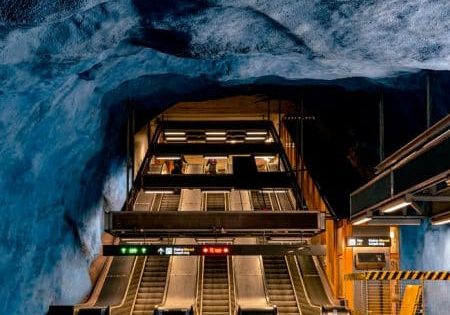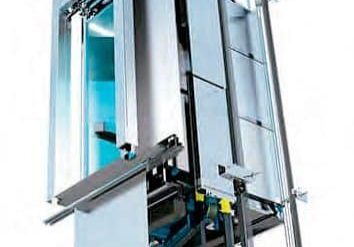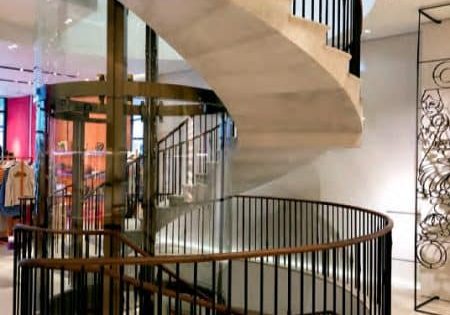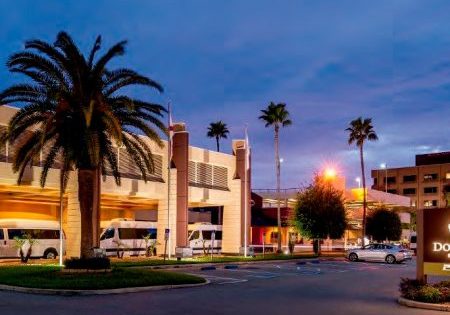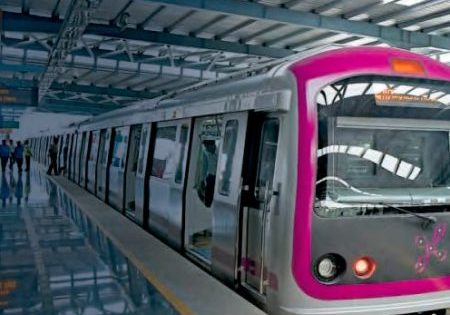A growing, more urbanized population and tighter regulations are among market drivers.
by Shem Oirere, EW Correspondent
A growing real estate sector and increasing demand for housing catering to the aged and physically challenged are driving growth of sub-Saharan Africa’s residential lifts market. Furthermore, new efforts to enforce hitherto ignored building codes — especially in Kenya, Ghana and Botswana — have raised prospects of an increase in demand for platform and cabin residential lifts or similar vertical-transportation (VT) equipment, as these countries endeavor to enhance safety and quality of life, particularly in urban areas.
Some countries in the region have also attracted local and international hospitality industry investors either building or planning new properties that require VT. Sub-Saharan African countries have specific lift requirements for all facilities that provide hospitality services.
In 2018, there were 110 new hotel construction deals signed in Africa, with a combined 18,655 rooms, up from the 94 deals with 14,606 rooms in 2017, creating further lift business opportunities. Development activity continues to be mainly in city centers, which account for almost 80% of the deals in the pipeline and 72% of the rooms. A handful of “very large resorts” account for the remainder.[1]
With Africa’s population expected to double from the current 1.1 billion by 2050, the demand for housing and associated amenities structures is likely to surge sharply as the estimated urban population grows, a potential trigger for the consumption of modern and convenient residential elevators.
There are two key drivers in this particular market within Kenya. There is a growing middle-class population, along with great development in quality healthcare.
— Ian Blackman, Elevator Concepts Ltd.
In Kenya, the rate of urbanization has grown to 4.5%, higher than the global average of 2.5%. Demand for housing is high, but the pace to match it with additional residential buildings remains slow, especially in the major towns of Nairobi, Mombasa, Kisumu and Nakuru. Kenya, like other East African countries, is eyeing the fruits of the region’s integration under the East African Community (an intergovernmental organization composed of six countries in the African Great Lakes region),[2] expansion of its urban population and a fast-growing middle class. These factors promise to drive growth of residential elevators, despite the market still being in its infancy compared to more mature ones in Europe and North America.
Ian Blackman, managing director at the Nairobi-based consultancy Elevator Concepts Ltd., observes:
“There are two key drivers in this particular market within Kenya. There is a growing middle-class population, along with great development in quality healthcare. This means there will be more elderly people with money in the foreseeable future, so demand for appropriate housing — quality homes, with lifts, where necessary — is bound to increase. This market is almost certainly going to increase in the near future due to the urbanization trend and associated developments going on now in Kenya.”
The Kenyan home lift market is considered small, though there is no official data to quantify the number of units installed or orders in the pipeline. Still, Blackman says this market will follow the general lift market throughout East Africa. Kenya will have the largest lift market, due to a larger economy and higher levels of infrastructure development and associated construction, he says.
Elsewhere, there is a push by state agencies overseeing construction standards to enforce national building codes that have largely been neglected. This lack of oversight has led to fatal incidents, such as the collapse of buildings, many in East and West Africa.
In Ghana, the government said it has fully embraced efforts to implement the country’s building code, launched in 2018 after essentially operating without a comprehensive code since the country gained independence in 1957. “Essentially, it has been a free-for-all in the building and construction industry, with no clearly defined standards,” Ghana’s Vice President Dr. Mahamudu Bawumia said when he launched the Ghana Building Code. According to Bawumia, enforcement of the code will allow the government to alleviate fears of building collapse and enhance the safety of building tenants. The code requires that all residential buildings of at least four stories have passenger lifts between the ground and residential floors.
I may not have exact figures of the South African home-lift market, but suffice it to say if we did 10 units this year, we now have orders for doing another 40 in the coming year.
— Arno Nel, Lifta South Africa
Kenya has a similar code, but, despite the frequent collapse of buildings (especially in the capital, Nairobi), it has been haphazardly enforced. The Kenya Building Code, which the Nairobi government recently pledged to enforce more strictly, requires every building of at least six stories to be equipped with at least one passenger lift. In addition, it requires that buildings exceeding six stories be provided with at least one firefighter lift. The code also requires bulk storage buildings (such as warehouses) taller than 30 m be provided with a “number of firemen’s lifts” so that no portion of any floor is more than 60 m away from such a lift.
Botswana is also pursuing full enforcement of building regulations. Every hotel must provide a lift; if it is taller than three stories, at least two lifts (one for service personnel only) must be provided. They should conform to Botswana Bureau of Standards No. 51, which also says any building exceeding 30 m in height must have a firefighter’s lift serving all floors, including the basement (if applicable).
The push for building code enforcement could see owners of existing buildings embark on retrofitting to ensure compliance, hence creating further business for lift modernization providers across the region.
In South Africa, a scarcity of available land for new construction is encouraging a preference for multistory buildings, observes Arno Nel, project manager at Lifta South Africa, the South African subsidiary of the family-owned German company Lifta GmbH. “I may not have exact figures of the South African home-lift market, but suffice it to say if we did 10 units this year, we now have orders for doing another 40 in the coming year,” Nel says.
Residential lift pricing varies from market to market across sub-Saharan Africa, depending on specifications, factory costs and local factors, according to Blackman. In Kenya, for example, a home lift could cost US$30,000 or more, hence the “importance of ensuring the correct equipment and installation company is identified.” For South Africa, Nel says a residential lift could cost US$22,800-US$27,800, depending on type
and design.
The outlook for Africa’s overall market for elevators and escalators is promising. India-based market analyst 6Wresearch says the region is expected to experience “expansion of infrastructure in the areas of retail, hospitality, commercial offices, healthcare and residential apartments.” This promises to generate revenues for VT players through 2024. While projecting a compound annual growth rate of 6% for the African VT market over the next six years, 6Wresearch attributes market expansion to an “expected increase in foreign direct investment and urbanization across all major countries.”
References
[1] W Hospitality Group, “2019 Hotel Chain Development Pipelines in
Africa,” April 2019.
[2] wikipedia/org/wiki/East_African_Community
[3] sahistory.org.za/dated-event/gold-coast-ghana-gains-independence
Get more of Elevator World. Sign up for our free e-newsletter.



